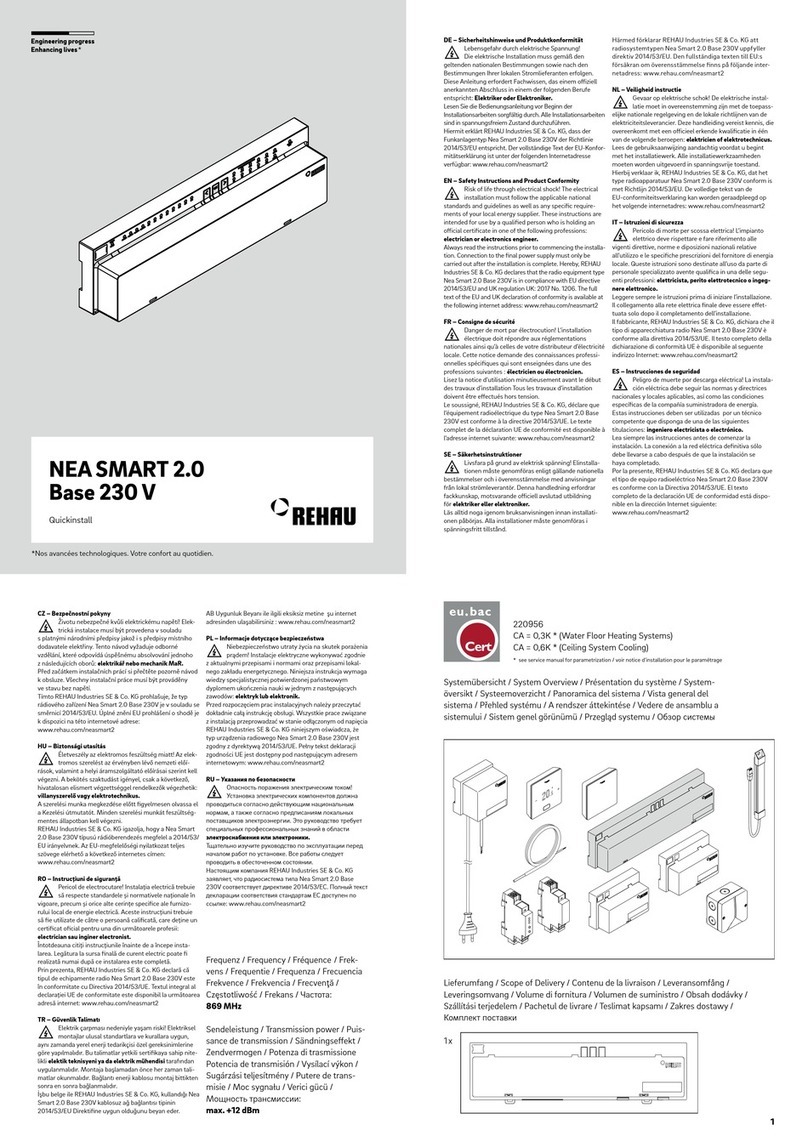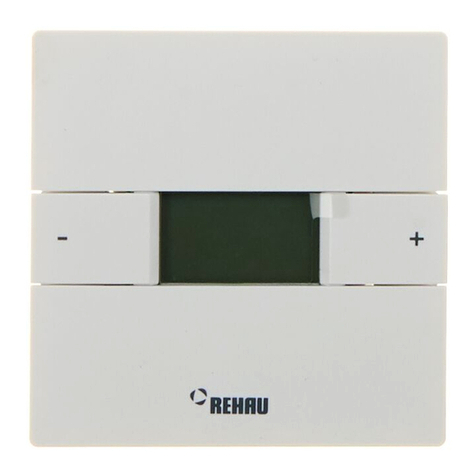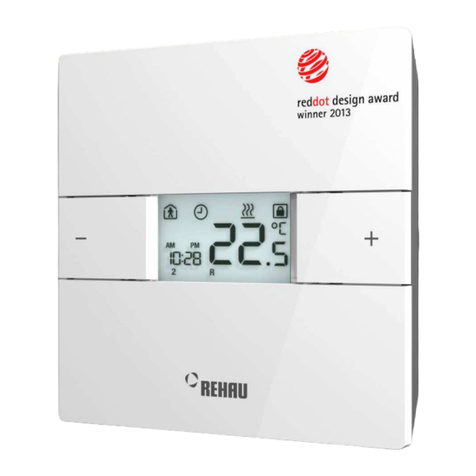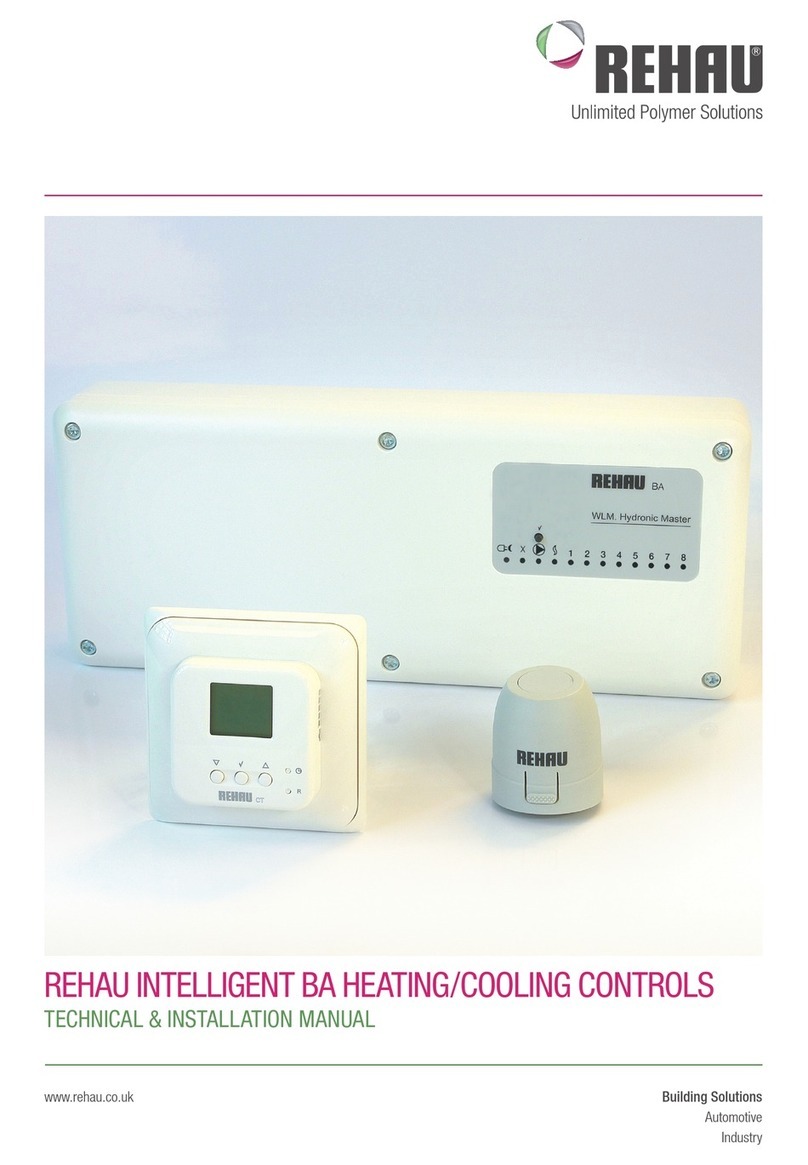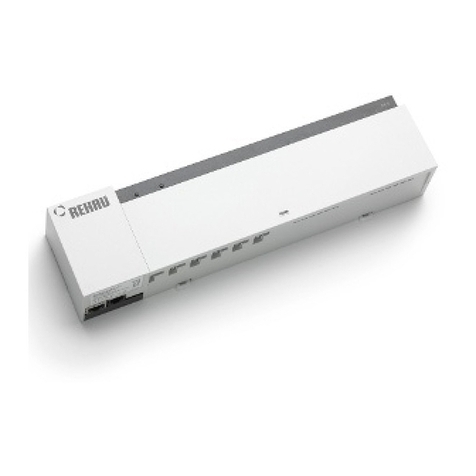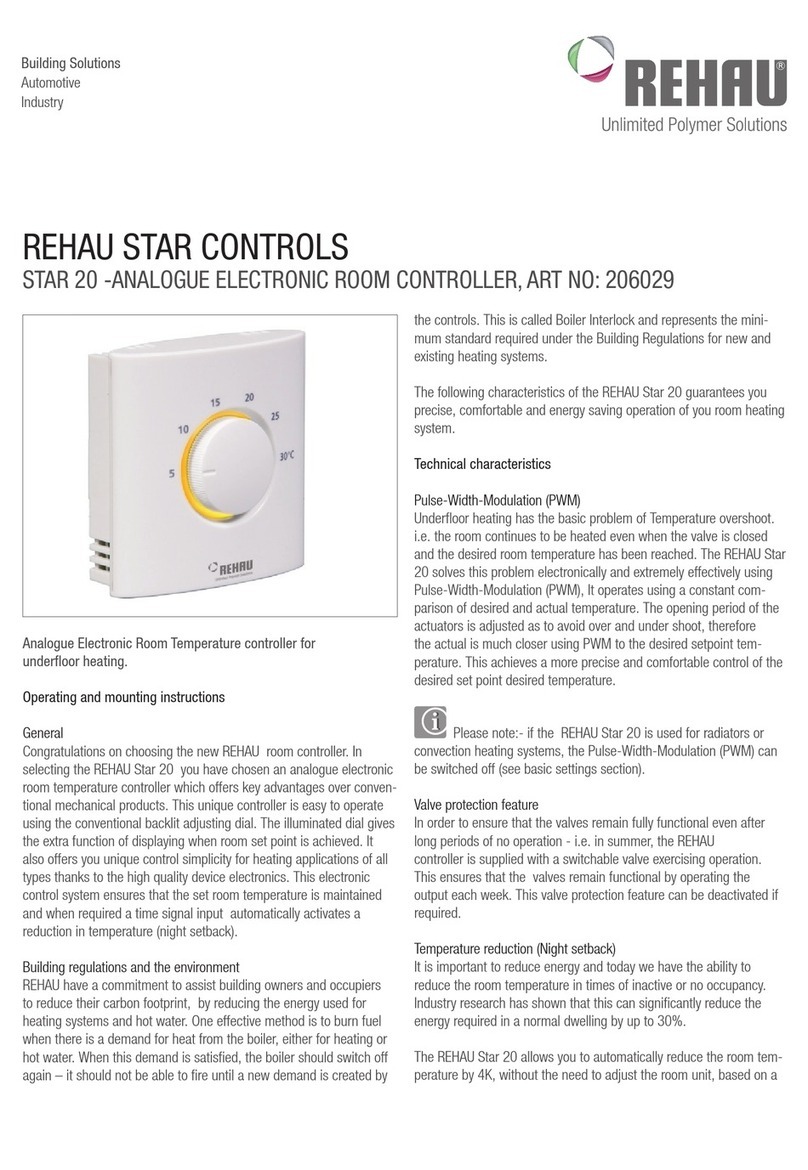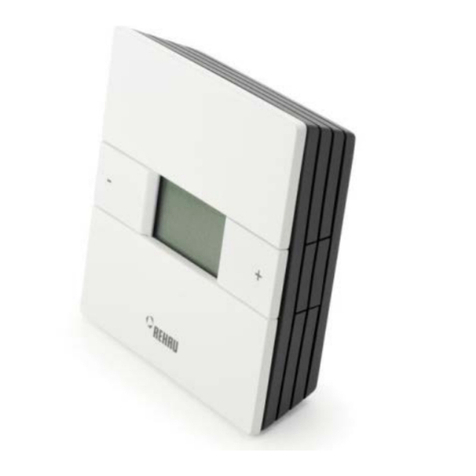5
èRead the safety recommendations and operation instructions
carefully and completely for your own safety and for the safety
of other people before starting assembly.
èRetain the operating instructions and keep them handy.
èIf you do not understand the safety recommendations of individual
assembly instructions, or if they are unclear, contact your respective
REHAU sales office.
Intended use
The underfloor heating systems and system components from REHAU
may only be planned, installed and operated in accordance with this
technical information. Any other use is unintended and therefore
impermissible.
èObserve all applicable national and international wiring, installation,
accident-prevention and safety regulations when installing control
systems and observe the notes in this technical information.
Areas of use not dealt with in the technical information (special
applications) require consultation with our applications department.
èPlease contact your REHAU sales office.
General precautionary measures
èObserve the generally applicable accident prevention and safety
regulations when installing REHAU control systems.
èKeep the work area clean and free of impeding objects.
èProvide sufficient lighting at the work areas.
èKeep children, house pets, and unauthorised persons away from
tools and the assembly sites. This is especially important in cases
of renovation in inhabited areas.
èUse only the intended components for the respective REHAU
system. The use of the components or tools from other companies
which are not from the respective REHAU installation system can
lead to accidents or other dangers.
Work clothing
èWear protective glasses, suitable work clothing, safety shoes,
a protective helmet and gloves.
èDo not wear loose clothing or jewellery, as they can get caught
by moving parts.
When assembling the system
èAlways read and comply with the respective operating instructions
of the REHAU controls system used.
èEnsure the floor is controlled via a separate high limit temperature
control. Details can be found in BS EN 1264. Compact mixers
supplied by REHAU can be used to confirm to this standard.
èWhen performing service and conversion work always isolate and
test to ensure circuits are fully isolated.
NOTES OF THIS TECHNICAL INFORMATION
Applicability
This technical information applies for the DIN standard and all BS,
EN and hENs standards applicable.
Navigating
A detailed table of contents with hierarchical titles and the
corresponding page numbers is found at the beginning of each
chapter.
èPlease check at regular intervals whether a more recent version
of this technical information is available for your own safety and
to ensure correct usage of our products. The date of issue of your
technical information is always printed on the bottom right on the
cover pages (e.g. 3.07 for March 2007)
- The current technical information is available from your REHAU
sales office, or downloadable at www.REHAU.co.uk
SAFETY INSTRUCTIONS
INFORMATION ON THIS DOCUMENT
2.






